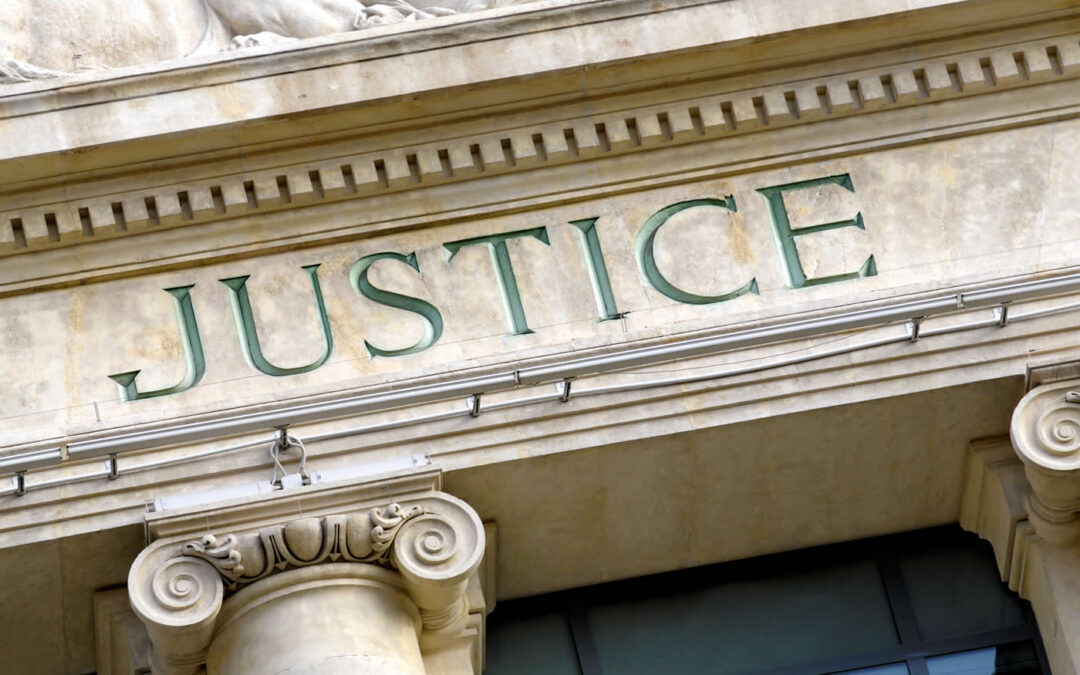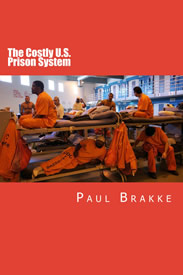Ever since the battle over the confirmation of Brett Kavanaugh to the Supreme Court, liberals have complained that President Trump and the Republicans are stacking the Court with political hacks who will toe the conservative right wing line. They claim that the Court with its new conservative justice will now have the power to line up behind whatever President Trump and the Republicans want.
As a result, they falsely claim that Kavanaugh’s appointment reflects the erosion of the independence of the Supreme Court and the rest of the federal judiciary, as the President and the Republicans support the selection of conservative justices at all levels of the court system.
But this assessment of a lack of independence from the executive and an inability to reach a fair decision is WRONG! Even Justice Ruth Bader Ginsberg, who is considered a hero by the left and the Democratic party, agrees. As she commented in speaking to Duke University’s D.C. Summer Institute on Law and Policy on July 25: “The court remains the most collegial place I have ever worked.” She also stood up for President Trump’s two nominees to the court and said she would like to see “patriots on both sides of the aisle” come together in support of Supreme Court nomination. “The takeaway is we agree considerably more often than we sharply divide.”
I heartily agree, too, since a review of the top Supreme Court decisions for the first half of 2019 shows that the Court really does take a fair and balanced approach to deciding cases. It does not always take the conservative point of view. In fact, lately, the Court has actually supported more liberal positions than conservative ones, and some of its decisions have gotten bipartisan support.
“Thus, the Court certainly appears to be functioning as it should, since it has shown its independence by supporting a mix of conservative and liberal positions or by steering a middle course.
And in a couple of cases, the justices have refused to take any position because they viewed the case as a political matter and not for the courts to decide.”
Thus, despite the liberals’ claims that the Supreme Court has been taken over by conservatives, the reverse is actually true in these top cases. Six of the decisions supported a liberal position, four supported a conservative view, and in the remaining cases, the Court decided it didn’t have jurisdiction to decide anything or took a middle path in balancing both conservative and liberal concerns. Here’s a brief review of these cases which shows the independence and fairness of the Court’s carefully reasoned decisions.
The Conservative Opinions
The four cases where the Court took a conservative position are these:
– in the Food Marketing Institute versus Argus Leader Media case, the Court favored privacy protections in its June 24th decision with a 6 to 3 majority. Whereas the media wanted more open records, the businesses wanted a more protected disclosure of these records, so they could continue to keep records customarily treated as private confidential, when the media requested them under the Freedom of Information Act.
– in the Lamps Plus Inc. versus Varela case decided April 24 in a 5-4 vote, the Court favored the business community when it decided that if a contract between employers and workers was ambiguous, the matter should be resolved through individual and not class arbitration.
– in the American Legion versus the American Humanist Association case decided June 20 by a 7 to 2 vote, the Court supported keeping up a nearly century-old World War I large peace cross in Bladensburg, Maryland, despite its religious connotations, even though the American Humanist Association wanted the cross moved or altered based on the principle of church-state separation.
– in the Nielsen versus Preap case decided on March 19 by a 5-4 vote, the Court took a hard line against criminals and immigrants, when it decided that the federal government is free to detain noncitizens with a criminal record at any time after they are released from custody.
The Liberal Opinions
By contrast, the Court took a liberal position in the following six cases, and most notably in some of its criminal justice and politically charged rulings, as the following summary illustrates.
– In one widely publicized case dealing with the census, the Department of Commerce versus New York State decided June 27 in a 5-4 decision, the Court actually stood up to the Administration by temporarily blocking the Administration’s plan to add a citizenship question to the 2020 census. It did so after questioning the Administration’s rationale for the effort to add the question, which seemed contrived. Though the President was furious and tried to generate an Executive order to get around the Court’s decision, it was too late. The Department was already printing up census forms, so the matter died with a win for the liberals.
– In the Iancu versus Brunetti case decided June 24 in a 6-3 decision, the Court strongly favored the freedom of individuals or companies seeking trademark protection, even if they wanted to protect material that might be considered “immoral” or “scandalous.” Though strongly religious conservatives might protest such a decision, the Court stood strongly with liberals, who tend to want the personal freedom to say whatever they want.
– In the Apple Inc. versus Pepper antitrust dispute decided May 13 in a 5-4 decision, the Court also supported the liberals’ position when it backed individual consumers in deciding that the users of iPhones could sue Apple over charging excessive prices in its App Store. In fact, Associate Justice Brett Kavanaugh, supposedly the tried and true conservative, joined the four liberal justices in supporting consumer and antitrust laws, and he wrote the opinion for the Court, stating that: “Ever since Congress overwhelmingly passed and President Benjamin Harrison signed the Sherman Act in 1890, protecting consumers from monopoly prices has been the central concern of antitrust. That is why we have antitrust law.”
– In the Flowers versus Mississippi case decided on June 21 by a 7-2 vote, the Court decided that Flowers deserved a new trial, because discrimination had played a role in him being found guilty and imprisoned for 22 years in a quadruple murder case. The Court decided that Flowers should have a new trial because of the prosecutor’s racial discrimination in jury selection, since in each of Flowers’ six trials over two decades, the district attorney had eliminated 41 of 42 potential black jurors by using peremptory strikes — a clear case of racial discrimination.
– In the Timbs versus Indiana case decided February 20 by a rare unanimous 9-0 decision, the Court strongly favored the liberals’ position that states shouldn’t impose excessive fees, fines, or forfeitures as criminal penalties to individuals facing criminal charges. The states shouldn’t do so because such fees could prevent low income criminal defendants from remaining out of prison or getting a fair trial. In making its decision, the Court agreed that the Eighth Amendment’s prohibition against excessive fines should apply to states and localities as well as to the federal government. In short, the Court united in expressing this liberal point of view.
– In the Virginia House of Delegates vs. Bethune-Hill case decided June 17 in a 5-4 decision, the Court opposed gerrymandering done for racial reasons. It did so by determining that Virginia’s Republican-controlled House of Delegates couldn’t challenge a lower court decision which rejected 11 legislative districts because this was racial gerrymandering.
Other Cases Where the Court Took No Position or a Balanced Position
The Court’s balanced and fair approach is also shown by the cases where it didn’t take a position or tried to balance the views of the liberals and conservatives. Here’s a brief summary of those cases.
– In both the Rucho versus Common Cause and Lamone versus Benisek cases decided June 27 with 5 to 4 decisions, the Court sought to remove itself from the political fray by deciding that the federal courts lack jurisdiction to intercede in gerrymandering based on partisan divisions in the state. The Court made this decision because it thought it shouldn’t interfere in situations based on purely political questions.
– In the Kisor versus Wilkie case decided June 26 in another 5-4 ruling, the Court balanced both the conservative and liberal points of view. Whereas conservatives favored a decades-old Supreme Court position that the agencies should retain the power to interpret the ambiguous regulations themselves, the Court added a limitation that would appeal to liberals. It decided that the agencies could only retain that power when a regulation is genuinely ambiguous, and it still needed to interpret the rule reasonably.
– Finally, in the Gamble versus United States case decided June 17 in a 7-2 decision, the Court took the middle way by deciding that a criminal can be charged separately by federal and state governments for the same crime, despite the double jeopardy rule that a person can’t be tried twice for the same crime. The Court did so because it was concerned about letting criminals go free, including some criminals who had previously been sentenced for their crimes. Thus, the Court took a tough on crime approach that conservatives generally favor. And in this case, liberals also favored this approach, because they were concerned that if the President pardoned anyone, including himself, those pardoned could go free if they couldn’t be prosecuted by the state, too.
In Conclusion
As I have demonstrated, the Supreme Court does offer a fairly balanced approach to making its decisions. This shows that it is truly independent of the executive branch, despite liberal complaints to the contrary. In some cases, the Court did support a more conservative perspective through its decisions favoring states’ rights, the business community, and a get tough approach to criminals. But in other cases, the Court supported liberal positions favoring privacy, consumer protection, and giving criminal defendants a better opportunity to defend themselves.
Thus, it is wrong to claim the Court is biased in favor of conservatives. Rather, the Court has reached all of its decisions through a rational, fair, and balanced process. Liberals outside the Court have failed to take into account the many cases, not in the public eye, where the liberal position has prevailed.
Accordingly, these varied opinions show that the Supreme Court is very much an independent institution that comes up with thoughtful, well-reasoned opinions. So, the liberals are wrong in claiming that it isn’t or that the conservative takeover represents a threat to our democracy. There is no conservative takeover. The Supreme Court remains independent and able to decide cases using rational thinking to make its decisions. Case closed.





